|
|
Superman: For Tomorrow Vol. 1 |

|
|
| Includes Issues: | ||
| Original Publication Dates: | ||
| TPB Publisher: | ||
| TPB Publication Dates: | ||
| ISBN-10: | ||
| ISBN-13: | ||
| Pages: | [More Info] |
For most books, this information is collected from the book itself and double checked against several other resources. If this particular book hasn't yet been released, the information probably comes from the publisher's press releases and Amazon.com.
Sometimes a book is listed here based upon a past solicitation, but never actually comes out. I like to keep these in the database, but I try to make a note of the situation.
I try to list the earliest publication date. For books with a hardcover and softcover or multiple editions this will be for whichever came first. Same for the ISBN numbers.
If there have been similar releases that have significant differences, eventually both will be listed. This means that Showcase and Archives that collect similar material are listed as separate books. Likewise, Omnibus, Deluxe, or Absolute editions will have a separate page, though they will probably be close in the timeline.
If you think any of the information on this page is off, feel free to leave a comment with a suggestion! You may also leave links to relevant information, alternative publications, reviews, or anything you think would be helpful to site visitors.
Sometimes a book is listed here based upon a past solicitation, but never actually comes out. I like to keep these in the database, but I try to make a note of the situation.
I try to list the earliest publication date. For books with a hardcover and softcover or multiple editions this will be for whichever came first. Same for the ISBN numbers.
If there have been similar releases that have significant differences, eventually both will be listed. This means that Showcase and Archives that collect similar material are listed as separate books. Likewise, Omnibus, Deluxe, or Absolute editions will have a separate page, though they will probably be close in the timeline.
If you think any of the information on this page is off, feel free to leave a comment with a suggestion! You may also leave links to relevant information, alternative publications, reviews, or anything you think would be helpful to site visitors.
| Lists: | Comics, DC Modern Age, DC Universe, Post-Crisis | |
| Series/Event: | ||
| Creators: | ||
| Characters: | Superman | |
| Edition: | [More Info] |
Each book is tagged and sorted by the terms above. Every link in this section (in orange) can be used to generate a dynamic reading list based on the term.
The Lists are large reading orders including every book that falls under them. For example, the DC Universe list includes every book in that shared universe. This taxonomy is hierarchical, which means that there can be sub-lists under the main lists. The DC Universe Pre-Crisis list is an example, allowing you to narrow the selection of DC books. The distinction is important, because eventually there will be Silver Age book lists for Marvel and DC, and the lists will not be intermingled because of that hierarchy. Look to the list information in the sidebar to see all the lists currently active. Check the header of each listing for specific information about each one.
The Series/Event taxonomy, like the rest, is not hierarchical. Not every book is part of a particular publication series, nor necessarily included in the reading order for an event. Events often include specific crossovers and tie-ins, but many event reading orders also include books purely because they are recommended for appreciation and understanding of that event.
The Creators will be tagged in every book in the database. These include all the writers, artists, and editors that worked on the collected material, as well as anyone who significantly contributed to the collected edition.
The Characters are very important to this database, since most users enjoy seeing a reading list generated by their favorite heroes and villains. Since each book is tagged with any reoccurring character inside, the amount of orders that can be generated through these tags is staggering.
Since there is so much information to be found in each book, it's relatively common for a couple tags to be missed. If you think this book needs attention - should be given any additional tags or moved off a particular list, for example - just leave me a comment and I'll get right back to you!
The Lists are large reading orders including every book that falls under them. For example, the DC Universe list includes every book in that shared universe. This taxonomy is hierarchical, which means that there can be sub-lists under the main lists. The DC Universe Pre-Crisis list is an example, allowing you to narrow the selection of DC books. The distinction is important, because eventually there will be Silver Age book lists for Marvel and DC, and the lists will not be intermingled because of that hierarchy. Look to the list information in the sidebar to see all the lists currently active. Check the header of each listing for specific information about each one.
The Series/Event taxonomy, like the rest, is not hierarchical. Not every book is part of a particular publication series, nor necessarily included in the reading order for an event. Events often include specific crossovers and tie-ins, but many event reading orders also include books purely because they are recommended for appreciation and understanding of that event.
The Creators will be tagged in every book in the database. These include all the writers, artists, and editors that worked on the collected material, as well as anyone who significantly contributed to the collected edition.
The Characters are very important to this database, since most users enjoy seeing a reading list generated by their favorite heroes and villains. Since each book is tagged with any reoccurring character inside, the amount of orders that can be generated through these tags is staggering.
Since there is so much information to be found in each book, it's relatively common for a couple tags to be missed. If you think this book needs attention - should be given any additional tags or moved off a particular list, for example - just leave me a comment and I'll get right back to you!
| Previous Book: | ||
| Next Book: | [More Info] |
These links take you to the previous or next book in the database. It's worth a mention that, at this point, this is specifically in the database.
That means that if you came to this book page via a specific character reading order, for example, the links may point to books that were not listed on the previous page's reading order. This is because they are taking into account the entire database.
At this time, they go by the Recommended Reading Order (or equivalents for non-DCU lists) for determining which books to link.
I am currently looking into getting them to give direction based on what page you came from, but it's possible that there is no solution to that issue.
That means that if you came to this book page via a specific character reading order, for example, the links may point to books that were not listed on the previous page's reading order. This is because they are taking into account the entire database.
At this time, they go by the Recommended Reading Order (or equivalents for non-DCU lists) for determining which books to link.
I am currently looking into getting them to give direction based on what page you came from, but it's possible that there is no solution to that issue.
| Unique Reading Order ID: | 200905130600 | |
| Chronological List Value: | ||
| TRO Database Book ID: | 772 | [More Info] |
The Unique Reading Order ID determines this book's placement in all lists generated from the Recommended Reading Order (or equivalents for non-DCU lists). It's not actually unique site-wide, but is unique for each major list. This value is actually based on a date system, but has no relation to any real dates.
The Chronological List Value is determined by the most recent publication date of collected contents. This value determines book placement on all lists generated chronologically.
The TRO Database Book ID is a value indicative of when this book was added. It is used primarily for reference within the TRO database and not for sorting. It used to help with interpage linking, but has been replaced with a more user friendly "slug" (web url title) system.
These values are provided for the purposes of sorting your own collections. You could keep an excel spreadsheet or google document with the titles of the books in your collection. In columns next to the books, place each of these numbers. Then when you display the list sorted numerically by either of these columns, your books will fall into order.
Of course, now that TRO's built in collection sorting feature is active, it's much easier to sort your books. But these numbers still display just in case you'd like to use them or are curious about the inner operation of the website.
The Chronological List Value is determined by the most recent publication date of collected contents. This value determines book placement on all lists generated chronologically.
The TRO Database Book ID is a value indicative of when this book was added. It is used primarily for reference within the TRO database and not for sorting. It used to help with interpage linking, but has been replaced with a more user friendly "slug" (web url title) system.
These values are provided for the purposes of sorting your own collections. You could keep an excel spreadsheet or google document with the titles of the books in your collection. In columns next to the books, place each of these numbers. Then when you display the list sorted numerically by either of these columns, your books will fall into order.
Of course, now that TRO's built in collection sorting feature is active, it's much easier to sort your books. But these numbers still display just in case you'd like to use them or are curious about the inner operation of the website.




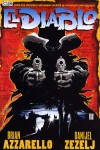
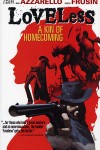
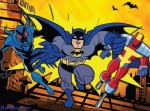

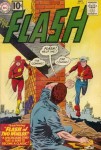
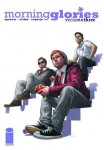
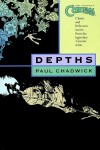

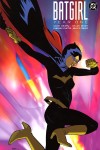




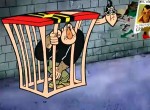





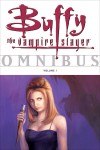







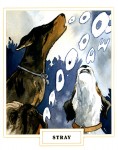

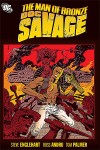
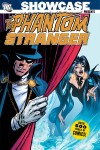

Ok, I swear on all things holy that Superman trades are absolutely the most difficult ones to place in a sane continuity. But after reading a couple tonight, I have another adjustment to offer.
The three relevant titles are “For Tomorrow,” “In the Name of Gog,” and “That Healing Touch” — which is the order they’re currently listed in. All three contain issues published between Dec 2004 and May 2005. All three tell distinct stories that can’t happen at the same time. Go figure.
But I think I have these three worked out now. “In the Name of Gog” definitely comes before “That Healing Touch” continuity wise, because the “The Story Thus Far” capsule summary at the beginning of Touch references the storyline from Name.
The part that throws it for a loop is For Tomorrow. Although Vol.1 covers material published before either of the trades listed above, the entire story seems to takes place (at least) a year forward of the other on-going series at the time. (Why? Who knows! Maybe just to screw with people like you and me…[grin].) Point is, it actually takes place the last of the three.
It’s too late for me to figure out a vague/non-spoilery way to explain why I’m sure, but I am. :)
P.S. Yes, you opened the floodgates when you invited me to contribute in this way. What can I say, its better than grading papers.
[Reply]
So the solution is simply to move For Tomorrow right after That Healing Touch?
The question I’ve got is, would you put volume 1 before and then volume 2 after the other trades?
I need to split this into two entries, actually, anyway, since they’re got distinct amazon listings, etc. This was the way it was sorted in my excel document back when I was using it to organize my bookshelf, haha.
Let me know what you think, and I’ll correct the order.
It’s a flood of help. :)
On a separate note, what do you teach? I’m applying for PHD programs next year so I can get a degree to teach Visual Culture. Ideally.
[Reply]
Yeah, that’s right, For Tomorrow goes right after That Healing Touch. I would keep the two volumes right next to each other too, because there aren’t any other Superman stories that could conceivably take place between the two halves. (Honestly I can’t figure out why DC split the story into two tiny volumes like that, unless they just really wanted to rush out a trade while the story was still ongoing.)
I teach comparative politics. I’m in my fourth year of the Ph.D. program at Ohio State, so I’m at the stage where I just teach and work on my dissertation. A degree in visual culture sounds pretty fantastic — got any places in mind you’re thinking of applying?
[Reply]
Ok it’s placed – I have no idea why it’s in two volumes either. Well, except the obvious double price tag.
Visual Culture is a semi-new field, at least named as such, and the options for good programs are a little limited. This program at NYU looks really good, but I’m coming from a BFA background, so even with Summa Cum Laude and the top of major award, I’ve got a lot of catching up to do when it comes to writing skills. Anyway, it’s something I’m going to have to start focusing on again in a few months.
Speaking of not focusing on academics, have you read Superman: Infinite City? It’s an OGN that was released around that time, but I honestly have no idea what it’s about.
[Reply]
So I checked out that NYU program. Looks great. I actually applied to a similar kind of interdisciplinary program at NYU (Law and Society) when I was doing the grad school application thing.
From my experience with that kind of thing, the absolute best way you can do is to write different statements of purpose for each school you apply to, and frame them with particular faculty in mind. The faculty members who sit on entrance committees don’t pay near as much attention to your background and test scores (so long as they’re relatively strong — which it sounds like yours are) as they do the statements. They’re looking to see whether your research interests would be a good addition to the department, and whether there’s someone to help you meet your goals.
I know my department has turned down people with 4.0 averages and high GRE’s simply because they felt they had too many judicialists, or IR constructivists one year. Likewise they’ve turned people down because they felt that there were no faculty members qualified to work in the research areas the student was interested in.
Point is, take some time to familiarize yourself with the work of the faculty members at the schools you apply to, write with them in mind, and it can really pay off in the long run.
Ok, end unsolicited, off-topic advice. [grin]
[Reply]
that’s good advice – I actually started looking at NYU because I was very familiar with some books written by the faculty in that program.
[Reply]
I haven’t read Infinite City. For some reason I thought that was an Elseworlds book (which I’m mostly skipping for now, except for those that get drawn into regular continuity) — but I see now that it’s not. Will have to see about scrounging that up.
[Reply]
It very well might be one of those weird non-elseworlds non-specific about continuity titles that could take place in the regular dcu but is never really mentioned in any other book so who knows? I guess we’ll have to see when one of us actually reads it.
[Reply]